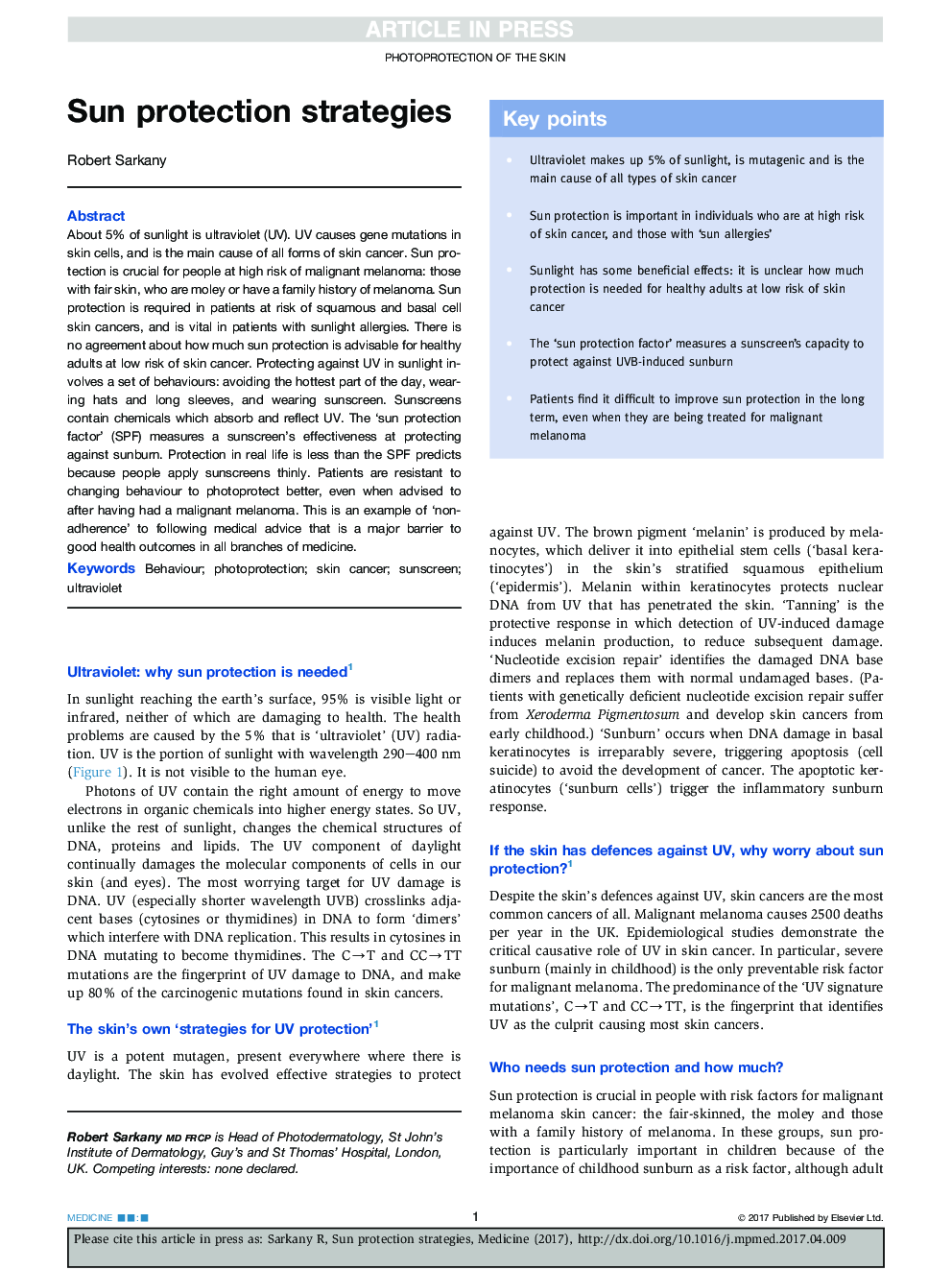| Article ID | Journal | Published Year | Pages | File Type |
|---|---|---|---|---|
| 5681194 | Medicine | 2017 | 4 Pages |
Abstract
About 5% of sunlight is ultraviolet (UV). UV causes gene mutations in skin cells, and is the main cause of all forms of skin cancer. Sun protection is crucial for people at high risk of malignant melanoma: those with fair skin, who are moley or have a family history of melanoma. Sun protection is required in patients at risk of squamous and basal cell skin cancers, and is vital in patients with sunlight allergies. There is no agreement about how much sun protection is advisable for healthy adults at low risk of skin cancer. Protecting against UV in sunlight involves a set of behaviours: avoiding the hottest part of the day, wearing hats and long sleeves, and wearing sunscreen. Sunscreens contain chemicals which absorb and reflect UV. The 'sun protection factor' (SPF) measures a sunscreen's effectiveness at protecting against sunburn. Protection in real life is less than the SPF predicts because people apply sunscreens thinly. Patients are resistant to changing behaviour to photoprotect better, even when advised to after having had a malignant melanoma. This is an example of 'non-adherence' to following medical advice that is a major barrier to good health outcomes in all branches of medicine.
Related Topics
Health Sciences
Medicine and Dentistry
Medicine and Dentistry (General)
Authors
Robert Sarkany,
